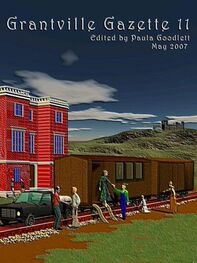Superstructures
Sixteenth-century warships had fort-like towers, the forecastle and aftcastle, to serve much like the towers of a castle on land. They were essentially infantry platforms, which gave their inhabitants a height advantage for missile and melee combat, and also some shielding from hostile fire. The problem, of course, was that they reduced the ship's speed, weatherliness, and stability. (Although Glete 38 says that they were of rather light construction, and thus not as adverse to stability as their height suggested.)
Raleigh warned against the "high charging" of ships, which "brings them all ill quality." They were phased out over the course of the seventeenth century (ChapelleSSUS 80), but it was a halting process. There was a concern that with most of the crew below deck manning the guns, the enemy could board amidships and trap the crew. Keeping the "castles" meant that the crew would have rallying points for launching counterattacks. (GleteWS, 30). These concerns ebbed, presumably as a result of both the steady increase in firepower and the provision of fighting platforms in the masts.
The three-deck battleship Sovereign of the Seas (1637) was in service until 1696, but at some point the superstructure was cut down because otherwise her draft was so great that in even a light air she couldn't open the lowest leeward gunports. (Langstrom 153).
Even merchant ships had substantial superstructure. Typically, the afterbody had two levels above the main deck, the half deck and the quarterdeck. (BakerCV 29). The poop deck is part of, aft of, or above the quarter deck, depending on the period.
Monohulls vs. Multihulls
The conventional sailing ship has a single hull. However, multihulls-two or more hulls joined together by a deck or struts-can be found in the seventeenth century in both the Indian Ocean and the South Pacific. The catamaran has two hulls, and the trimaran has three.
European experiments with catamaran designs date back at least to 1662.
According to canon (1633, Chap. 4), the timberclads used in the Baltic War campaign are catamarans, with paddle wheels positioned in-between their hulls. While these were steamships, their success will give the catamaran design a certain degree of credibility that it would not have possessed previously.
I intend to discuss the advantages and disadvantages of multihulls, and the problems peculiar to multihulls in a later article.
Shipbuilding
Plans. The first known printed plans for ships appeared in Instrucion Nautica (1587)(BakerSS 8). In 1650, the British Admiralty began requiring the preservation of warship plans but it took until 1675 to achieve compliance (ChapelleHASS 17). Plans weren't used in merchant shipbuilding until the mid-nineteenth century (McGee).
If you "take off the lines" of a ship (usually a captured vessel whose sailing performance impressed you), it means you reverse-engineer a plan for it. This required a specially-fitted dry dock (ChapelleSSUS 38).
Models. The English shipwright Pett is known to have made ship models as early as 1596. Ship models could be made, before the ship was built, for a variety of purposes-to please a customer (a model of the Prince Royal was given to Prince Henry in 1607), to persuade an prospective customer to approve the construction, as a teaching tool for apprentice shipwrights, or as a guide to the actual construction. . Reading multiview ship plans is something of an art, and the models no doubt had a more visceral impact on laymen.
In Britain, the Lords of the Admiralty were aristocrats and civil servants, not shipwrights, and they couldn't read plans. Hence, they demanded models, as well as plans, before engaging a contractor, and Admiralty models from the 1650s have survived. Their standard scale is 1:48, and they show the hull in detail. Decks were sometimes omitted so that the deck beams could be seen. (Anderson 145, 159; King 113; Davis 17; Grimwood 20). The lift model (layers of wood, held together by dowels, showing successive waterlines) appeared at the end of the eighteenth century. (Edwin 266; ChapelleSSUS 150ff).
Lofting. In the mold loft, thin pieces of wood were laid down to show, full size, the curve of the principal pieces of the hull. The purpose of this was to facilitate selection of which timbers to use where, and to guide the cutting of those timbers. Lofting is described in Fernandez' Livro de tracas de carpinataria (1616)(Schwarz) and Sutherland's Shipbuilder's Assistant (1711)(OED), and I suspect lofting predates the use of formal plans.
Cost and Time. The shipyard you pick makes a big difference. In 1669, Dutch cargo ships cost 40% less than English. (Unger 125). By building its own ships at Deptford, the East India Company reduced its costs in 1607 from?45 to?10/ton. (Gardner 29).
The Transportation Costs Addendum (1632. org) provides costs/ton for ships of various periods. In 163x, a 40-gun warship might cost 6000 pounds (Langstrom 149).
Ridler (62) suggests that for mid-nineteenth century warships, the number of man-days work required to build it and equip it for sea can be estimated by the formula 0.4*B^ 3*L/100, and the cost in dollars by multiplying the number of days by four. The cost breakdown, he says, is 72% hull, 5.4% spars, 4.6% sails, 4.8% rigging, 2.5% boats, 3.5% gun carriages, 0.5% outfits and sea stores, and 2.2% furniture. But Laing (54) says that as you increase the length/breadth ratio, while keeping capacity constant, the cost of construction increases.
Revenue. A merchant ship might reasonably hope to recover its cost in two trading voyages (Millar 3). Long-distance traders of course would need to carry more valuable cargoes for this to be the case.
Lifespan. Rot was the main enemy of the wooden ship, but of course navigational hazards, storms and hostile vessels also took their toll. On the Lisbon-Goa route, about one-sixth of the ships were lost, in either passage (Brigadier 14). The typical lifespan for a merchantman was 5-20 years, but some ships were flimsily built in the expectation that they would be used for just a few high profit, high risk voyages. Warships had a longer life, but required expensive rebuilds (at least half the original cost) every decade or so. (ChappelleHASN 47).
Up-Time Knowledge
In terms of books, the public and school libraries don't have much (see Addendum). But the "Four Musketeers," the teenage wargamers, were able to assemble "two tall piles" of books on naval history. In particular, we know Eddie Cantrell has "Chapelle's books on American sailing ship designs." And that "Chapelle's books had been pounced upon by the Swedish shipwrights as if Eddie had been Galahad, returning to King Arthur with Holy Grail in hand," and used to design a new sloop-of-war (1633, Chaps. 4, 28). EB11 "Shipbuilding" describes basic stability calculations.
Practical knowledge is important, but hard to find in a town that is over two hundred miles from the nearest ocean. Fortunately, we have John Chandler Simpson, a Naval Academy graduate with a bachelor's degree in engineering, and combat experience in Vietnam. Who was able to look at Eddie's plans for a riverine ironclad, and immediately realize that the displacement estimate was way too low, and that the ship would have twice the draft Eddie hoped for. (Weber, "In the Navy," Ring of Fire).
We also have Jack Clements, a retired Coast Guard boat pilot) who owns a large power boat (Century 3200), and Louie Tillman, a thirty year Navy veteran with another (Cris Craft). (1633, Chap. 35). Then there's Ernie Trelli, who served with the Navy in the Gulf War (Grid), but hasn't yet appeared in a story.
While there aren't many "old salts" in Grantville, the new USE navy is going to need physicists, engineers and mathematicians to reconstruct the sciences of aerodynamics and hydrodynamics, and to modernize construction methods and materials, and there at least we have a respectable pool of talent.
Читать дальше






